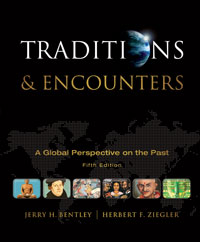Map A. Struggle for Control in China This interactive map illustrates how the civil war in China, between Communist and Nationalist factions, combined with Japanese territorial expansion in Asia to create an environment fraught with violence and confusion.
When Japan was awarded domain over Korea after the Russo-Japanese War, it began to set its sights on full control of Manchuria. The catalyst of Japan’s invasion was the Mukden Incident, which occurred on September 18, 1931. Chinese terrorists were accused of blowing up a section of a Japanese railroad when, in fact, the Japanese themselves had done it in order to provide themselves with some justification for the annexation of Manchuria. Their goal was accomplished and, as Japan withdrew from the League of Nations, they continued to press on into China.
Briefly describe the major shifts in thinking after World War I, especially in Europe. Why does the textbook call it "the age of anxiety" and stress the pervasiveness of disillusionment and pessimism? What kinds of thinking did people give up and what news kinds of thought did they embrace?





